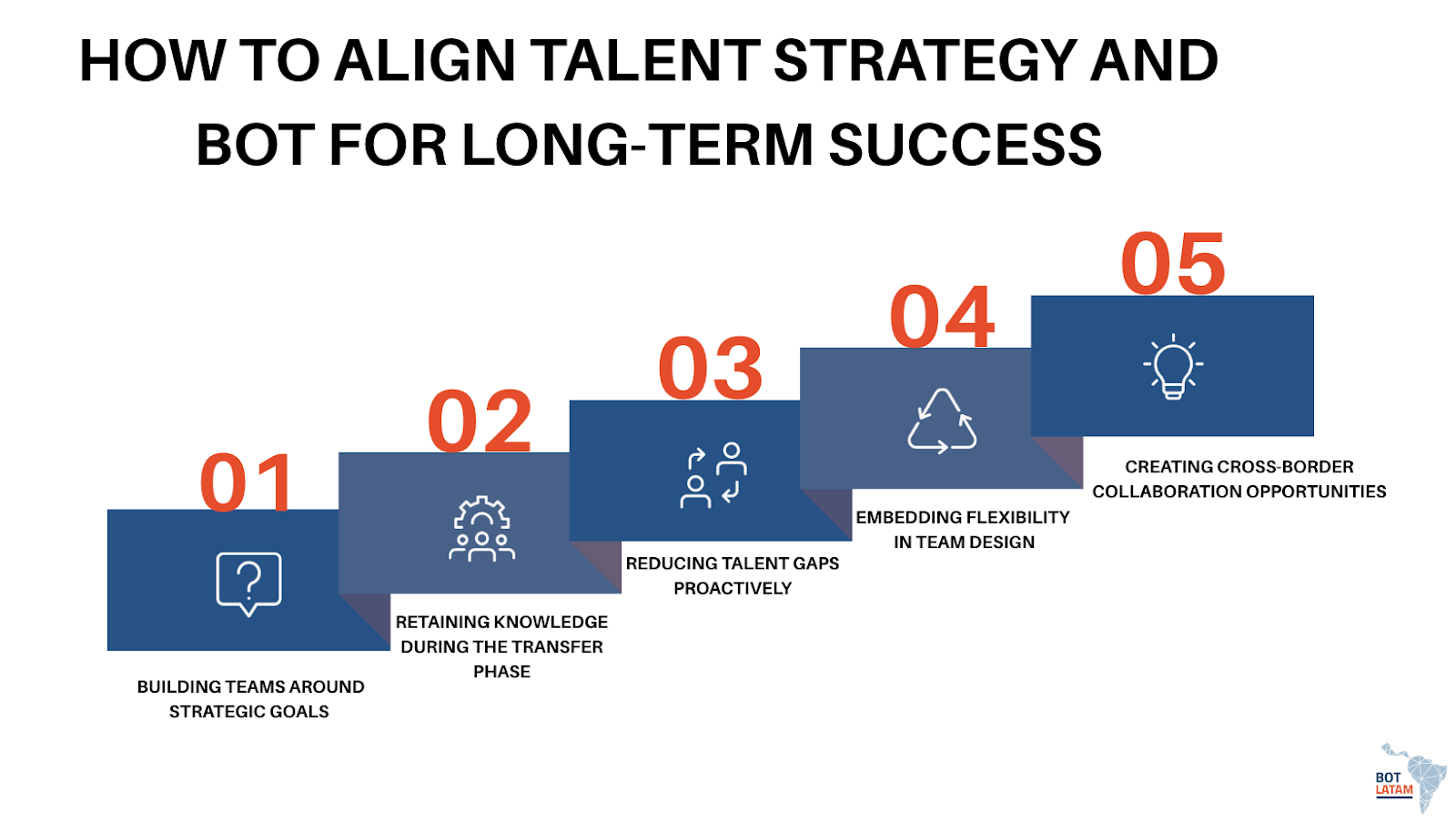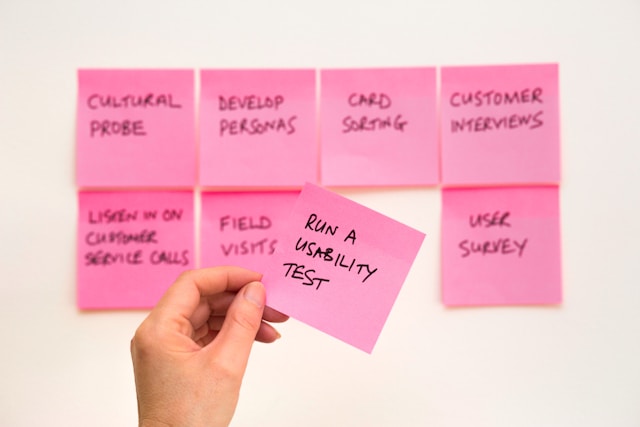Expanding a product line or scaling a team is never just about speed; it’s also about sustainability. That is where the Build Operate Transfer (BOT) model comes into play. Companies across industries are adopting BOT to align their talent strategies with long-term product objectives, ensuring growth without losing control.
The need is clear. A recent McKinsey study found that 87% of executives report skill gaps within their workforce, making talent alignment one of the biggest barriers to long-term strategy. BOT helps close those gaps by combining access to specialized talent with a structured path toward ownership.
This article breaks down how the BOT model supports talent alignment, balances short-term execution with long-term objectives, and creates lasting value for both teams and products. You will learn how BOT compares to traditional outsourcing, the challenges to watch out for, and the best practices that drive results.
What the BOT Model Means for Product and Talent Strategy
When you think about scaling products and teams, the Build Operate Transfer (BOT) model changes the way strategy takes shape. At its core, BOT ensures that product development and talent management are not treated as separate tracks but as interconnected drivers of long-term success.
For product strategy, BOT creates continuity across development cycles. Instead of relying on temporary outsourcing arrangements that may lack long-term accountability, the BOT model establishes a framework where an external partner builds and operates a team until it is fully ready to be transferred. This means product roadmaps remain consistent, and knowledge gained during early phases does not get lost. According to Deloitte, companies lose up to 42% of knowledge when teams transition without proper structures, making BOT an effective safeguard against this risk.
On the talent side, BOT aligns hiring with strategic needs instead of reactive gaps. Because teams are built with eventual ownership in mind, skills are chosen not only for immediate delivery but also for long-term relevance. This avoids the common issue of mismatched capabilities once the transfer phase is complete. Gartner reports that 58% of organizations face performance setbacks due to misaligned talent strategies, a challenge BOT directly addresses by embedding alignment into its design.
For you, the real impact lies in balance. BOT offers a structured path to grow products while securing the right people to sustain them. It reduces fragmentation between product goals and workforce planning, ensuring that both evolve together over time.
How To Align Talent Strategy and BOT for Long-Term Success

1. Building Teams Around Strategic Goals:
You can use the BOT model to assemble teams that are tailored to both immediate product needs and long-term objectives. Rather than hiring reactively, talent is selected based on the skills that will support future product roadmaps. This reduces skill gaps and ensures continuity as the team transitions from the build and operate phases into full ownership.
2. Retaining Knowledge During the Transfer Phase:
One of the critical risks in team transitions is knowledge loss. BOT mitigates this by embedding knowledge management into the process. You can implement structured documentation, mentorship, and overlapping responsibilities so that expertise remains in the team when ownership shifts.
3. Reducing Talent Gaps Proactively:
The BOT model allows you to anticipate talent shortages before they impact product delivery. By defining required skill sets early, you can ensure that teams are built with both current and future demands in mind. This approach minimizes downtime and avoids expensive corrective hiring. A Gartner study reports that 58% of organizations experience performance setbacks due to skill misalignment, a gap that BOT addresses by design.
4. Embedding Flexibility in Team Design:
You can structure BOT teams to adapt as product objectives evolve. Flexible roles and cross-functional training allow employees to shift responsibilities without disrupting delivery. This adaptability ensures the workforce scales in sync with the product lifecycle and long-term business objectives.
5. Creating Cross-Border Collaboration Opportunities:
BOT often involves remote or nearshore teams, which lets you tap into global talent while maintaining alignment with your product strategy. This cross-border setup increases diversity of thought and innovation, while providing access to specialized skills that may not be available locally.
Long-Term Product and Objectives Balancing With BOT
Linking BOT Engagements to Product Roadmaps:
You can use the BOT model to align every team activity with the broader product roadmap. By defining deliverables that directly support long-term objectives, BOT teams ensure that short-term sprints contribute to overarching goals. This reduces misalignment between immediate outputs and strategic priorities, keeping product development on track even during complex scaling phases.
Maintaining Continuity Across Product Lifecycles:
BOT allows you to sustain team knowledge and operational consistency throughout the product lifecycle. By retaining the same core talent from build to transfer, you avoid the disruptions that occur when teams are frequently replaced or reorganized. According to Deloitte, structured team transitions reduce project delays by up to 35%, highlighting the importance of continuity in long-term planning.
Balancing Short-Term Deliverables with Long-Term Goals:
With BOT, you can simultaneously meet immediate product milestones while preparing for future expansions. Teams are designed to deliver functional outputs now while developing capabilities for next-stage innovations. This dual focus prevents the common trap of over-prioritizing quick wins at the expense of sustainable growth.
Ensuring Innovation While Preserving Operational Stability:
BOT frameworks give you the flexibility to innovate without jeopardizing core operations. Cross-functional teams and phased knowledge transfer create space for experimentation while keeping essential processes intact. Research from PwC shows that companies with structured innovation frameworks report 1.3 times higher efficiency in product delivery, emphasizing the value of balancing experimentation with stability.
Integrating Feedback Loops for Continuous Alignment:
You can embed structured feedback mechanisms into BOT operations, ensuring product objectives and team capabilities stay in sync. Regular reviews and performance assessments help teams adapt to changing market conditions, keeping long-term goals achievable without compromising quality or speed.
Best Practices for Maximizing BOT Model Outcomes
1. Setting Clear KPIs for Talent and Product Alignment.
You should define measurable key performance indicators from the start. KPIs help ensure that both talent contributions and product outputs remain aligned with long-term objectives. According to Harvard Business Review, organizations that implement clear performance metrics see a 12% increase in project success rates. By tracking progress regularly, you can spot misalignments early and make data-driven adjustments.
2. Integrating BOT Into Long-Term Workforce Planning.
BOT is most effective when it becomes part of broader workforce planning. Align team structures with anticipated growth, and account for skill evolution over time. This proactive planning reduces turnover risks and ensures that critical roles are consistently filled.
3. Building a Governance Framework for BOT Success.
You can maximize outcomes by establishing a clear governance structure. Define roles, responsibilities, and decision-making authority for all stages of BOT, build, operate, and transfer. Governance ensures accountability, reduces ambiguity, and supports consistent execution across teams.
4. Selecting the Right BOT Partner for Growth.
The success of BOT relies heavily on choosing a partner that understands your product vision and talent needs. Look for partners with proven experience in scaling teams, maintaining knowledge continuity, and supporting cross-border collaboration. A strong partnership enhances efficiency, minimizes risk, and accelerates the achievement of long-term objectives.
5. Embedding Continuous Feedback and Adaptation.
You should create regular feedback loops between product teams, BOT operators, and leadership. Continuous assessment allows you to adapt quickly to market changes or evolving objectives. Research from PwC indicates that companies with structured feedback cycles see a 20% improvement in operational efficiency. This approach ensures that BOT operations remain agile while supporting long-term goals.
Looking for Build-Operate-Transfer Solutions?
Successfully aligning talent strategy with long-term product objectives is critical for sustainable growth. Companies that implement structured team models see up to a 35% improvement in project continuity and a 25% reduction in skill gaps, according to Deloitte.
At BOT LATAM, we help businesses achieve this alignment by building, operating, and transferring high-performance teams tailored to both product roadmaps and talent strategies. With expertise in cross-border collaboration and knowledge retention, we ensure that your teams deliver immediate results while remaining fully prepared for long-term ownership and innovation.
By integrating our approach, you can maintain operational stability, accelerate product development, and secure the right talent for future growth, creating measurable outcomes that support your strategic objectives. Contact us to schedule a discovery call to get started!

Revolutionize Your Workflow with Our Innovative BOT Strategy!
Enhance your operations seamlessly and adapt to market demands
Contact Us



%2017.26.38.png)
